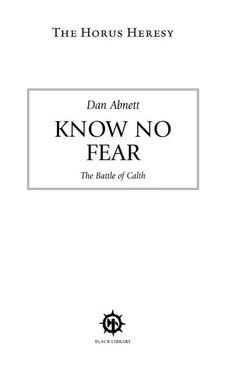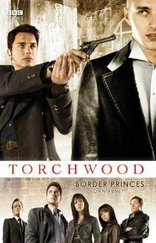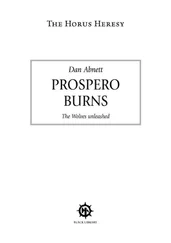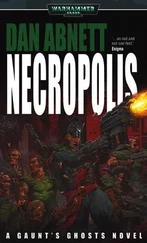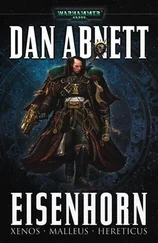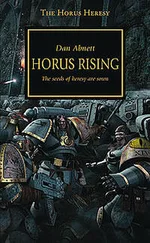and alone in such darkness, on a deceleration arc past the outer moons, one small ship, overweight and wheezing, over three and a half thousand souls because no log record or data canister is recovered from the wreck
which had been penetrated by something in the night, made in the night, made out of the night, a void-hard darkness with teeth and eyes, squirting through every airgate and hatch seal and vent tube like pressurised oil though it is assumed that the vessel was overhauled by a fighting ship from the XVII Legion’s fleet and taken with all hands
all of them screaming as they were blinded and suffocated, nowhere to flee to, no escape, no door that would open except to bare and airless space, and still the thing made of night filling the Campanile up, every compartment and deckway, every chamber and access, like black storm water flash-flooding an underground habitat, blinding and choking and drowning everything, filling rooms, filling mouths, filling lungs, filling ears, filling stomachs, stewing brains, smothering gunfire, blunting blades, swallowing the screams of the dying and the overcome, stealing the screams away and laughing them back in mocking voices that promised that screams were nothing more than the chamber music of dark monarchs mankind had only just begun to dream of so that its anchorage codes could be used to penetrate the platform yards.
Course irregularities are noticed of the Campanile by Calth System Control at mark: -136.14.12 and again at mark: -135.01.20 and mark: -122.11.35.
Vox contact is recorded as lost at mark: -99.21.59.
Two hours later, Calth System Control marks the Campanile ‘cause for concern’, and the Master of the Port determines that a support intercept should be sent out if nothing further is received by the end of shift. There are one hundred and ninety-two thousand items of shipping traffic in the Veridian System that day because of the fleet conjunction.
The support intercept is not sent out because the Campanile resumes code transmission at mark: -88.10.21.
The crew of the Campanile is listed on the roll of the fallen in the aftermath of the battle, though none are ever seen again / except they were, but not in any form that they could be recognised, apart from their screams.
[mark: -124.24.03]
The first of the fleet advances have hauled their scarred hulls into the arrestor slips and come to full stop in the high anchor station above Numinus City. They are warships that have gone a long way, and killed a great many things, and they wear the insignia and colours of the XVII proudly.
Luciel opens the airgate hatch. His company has been assigned close protection of Numinus High Anchor. He has requested the duty personally.
Tall as one big man on another big man’s shoulders, broad as any three muscle-heavy athletes, his bulk augmented by the massive ceramite plate of gleaming Praetor-pattern armour, Luciel opens the airgate hatch.
The light inside finds him blue and gold. His skull-close helm is in place. Behind the visor slits, Luciel’s eyes react as fast as the optic augmetics in the slit rims. Involuntary combat instincts take over: a new space is revealed, so he must consider it and assess any threats. An airgate compartment, sixty cubic metres, grav supporting decking, self-seal armoured skinning, neutral normalised atmospherics (though Luciel can feel the pressure decay of the air pumps’ end-cycle). There’s a reciprocal airgate hatch at the other end of the gate compartment.
There is a figure in front of the door. It is another Space Marine in full wargear.
Luciel is XIII Legion, an Ultramarine. Blue and gold, clean and sharp. Armour burnished to a silk gleam. The Praetor-pattern is a new variant, locally fabricated at Veridia Forge, not yet a formally accepted mark within the Legiones Astartes.
The other is XVII Legion, a Word Bearer. His pattern is the current Mark IV, the Maximus, built for Imperial supremacy. Its fixed frontal armour and angular helm are familiar.
Its colours are not. Dark crimson, with gunmetal edging. Company symbols and squad brands lacquered in dark shapes, almost undecipherable, as if they have been erased or are yet to be painted. Where is the plasma-etched grey of the old scheme?
The Word Bearer is almost unrecognisable. For a nanosecond, the figure registers to Luciel as an unknown, a threat.
Transhuman responses are already there, unbidden. Adrenaline spikes to heighten an already formidable reaction time. Muscle remembers. Luciel wears his boltgun, an oiled black pit bull of a weapon, in his thigh holster. He can draw, aim and fire in less than a second. The range is six metres, the target unobstructed. There is no chance of missing. Maximus plate, frontally augmented, might stop a mass-reactive shell, so Luciel will fire two and aim for the visor slits. The airgate skin-sleeve is self-repairing, and will survive las-fire damage, but a bolter shot will shred it open, so Luciel also braces for the explosive decompression of a ricochet or a miss-hit. At a simple, subconscious neural urge, boot-sole electromagnets charge to clamp onto the deck plates.
Luciel thinks theoretical, but of course there is no theoretical. There is no tactical precedent for a Space Marine to fight a Space Marine. The idea is nonsense. He thinks practical, and that directs him to the visor slits. He can make a clean kill headshot in less than a second and a half, two rounds for kill insurance, and probably protect the atmospheric integrity of the airgate.
All this, all this decided, unbidden, instinctive, in less than a nanosecond.
The Word Bearer raises his right hand. Moving it where? Moving it towards his primary weapon, a plasma cannon in a pull-to-unlock sheath?
The hand spreads, opens like a flower, palm forward, the light glinting off the tiny mail links.
‘Luciel,’ says the Word Bearer. ‘Brother.’
‘Tchure,’ Luciel replies, his voice a growl over the helmet speaker. ‘Brother,’ he adds.
‘Well met,’ says the warrior of the XVII, stepping forward.
‘A long time,’ says Luciel, coming to meet him. They embrace, forearm guards clattering off backplate panels.
‘Tell me, brother,’ says Luciel. ‘What new things have you learned to kill since last we met?’
[mark: -116.50.32]
Aeonid Thiel, Ultramarine, marked for discipline and censure, boards the blue and gold Stormbird on a landing strip two thousand kilometres south of Numinus City. The sun, which is a star named Veridia, is a dot of pearl in the pale sky. A beautiful star, Thiel has heard it said. A beautiful star and a fine world.
Before him, the Dera Caren Lowlands, the district of manufactories and assembly halls, matt metal in the sunlight. The buildings, clean, simple and utilitarian, wisp white vapours into the clear sky through rotating roof vents and cycle chimneys. Areas of forest have been preserved between the finishing concourses where the labour force can rest and mingle between shifts.
In the west, just a cloudy ghost low in the sky, one of the orbital shipyards has just risen like a moon. Thiel knows of eight others. Soon, Calth will rival Macragge’s manufacturing output, perhaps in two or three decades. There is already talk of a projected superorbital plate. Like Terra. Terra has superorbital plates. The master worlds of the Imperium have plates. Calth will join Macragge, Saramanth, Konor, Occluda and Iax as one of the master worlds of the Ultramar sector, and between them, they will govern a vast swathe of the Ultima Segmentum. Calth will be one of the anchor points of the coming civilisation.
Calth is an embodiment of the reward that centuries of warfare have been leading to.
For this reason, Calth must not fall. For its status as part of the dominion of Ultramar, it must not fall. For its shipbuilding capacity and its forge world, it must not fall.
Читать дальше
